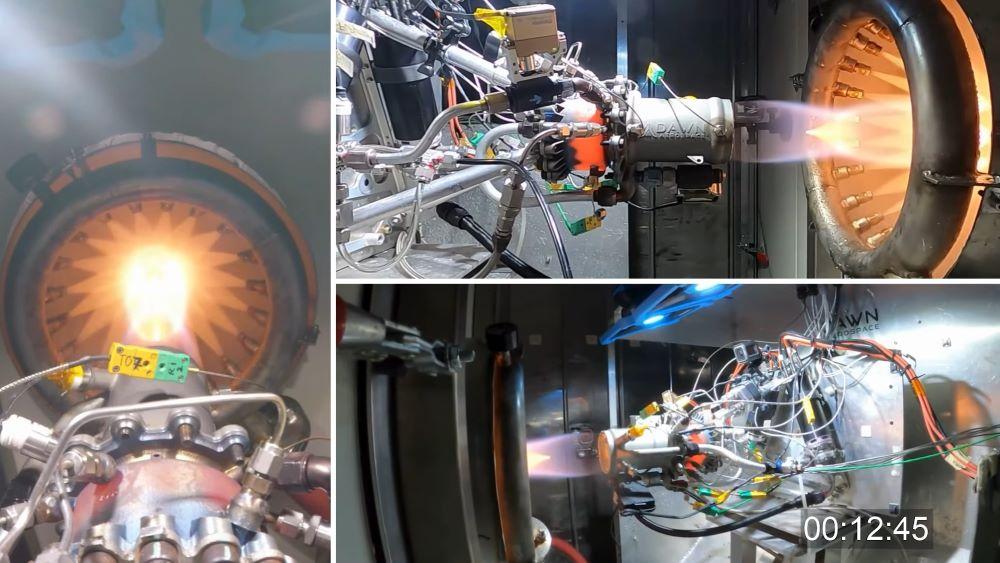
Dawn Aerospace says it envisions its Mk-II Aurora spaceplane flying to space twice per day, taking off and landing on a runway.
Dawn Aerospace has run a full-duration, bipropellant ground test of its Mk-II Aurora spaceplane’s rocket engine.
The Mk-IIA engine was fired for 112 sec. at the company’s ground test facility in Christchurch, New Zealand, Dawn Aerospace said Dec. 12.
The startup plans to install the engine into the Mk-II Aurora, its suborbital technology demonstrator.
“Dawn’s propulsion team has been working on improvements in preparation for the next set of flight tests, set to take the vehicle to supersonic speeds and above 20 km altitude in early 2024 to complete the test campaign of the Mk-IIA,” the company says.
The uncrewed, subscale Aurora demonstrator flew three times via rocket power in March and has flown another 47 times using jet engine power.
The Mk-II is intended to prove critical technologies for Dawn Aerospace’s Mk-III, a larger two-stage-to-orbit, rocket-powered spaceplane. The Mk-III is to be 22 m long, compared to the 4.8-m length of its predecessor, and is designed to carry 250 kg to low Earth orbit.
Dawn Aerospace also plans to use the Mk-II demonstrator, which is designed to fly a parabolic flight trajectory up to 110 km, just beyond the edge of space, as a commercial vehicle as well. The vehicle can carry a 3U payload of 5 kg for up to 180 sec. of microgravity, useful for carrying aeronomy, Earth observation, education, in-space science, space weather or technology development payloads, the company says.
The Mk-11A rocket engine uses hydrogen peroxide as an oxidizer and fuel as a kerosene. Those propellants were chosen because of their storability and the engine is capable of “deep throttling down to 30% thrust,” the company says. The rocket engine is designed to have a maximum thrust of 3,700 n at sea level and be fully restartable.
“While [hydrogen peroxide] is the right long-term choice for the spaceplane, it led to some interesting challenges in the development of the engine,” says Ralph Huijsman, lead propulsion engineer with Dawn Aerospace. “The available information is extremely limited and is often outdated or walled off. This meant we ran into some fundamental challenges along the way that were difficult to engineer our way out of.”
Dawn Aerospace says it envisions its Mk-II Aurora spaceplane flying to space twice per day, taking off and landing on a runway.






Comments